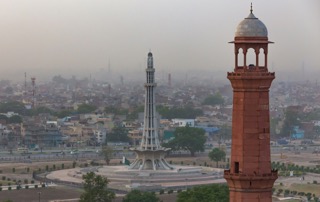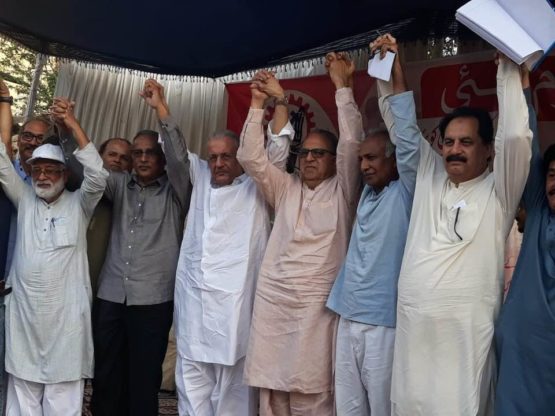- About
- Topics
- Picks
- Audio
- Story
- In-Depth
- Opinion
- News
- Donate
- Signup for our newsletterOur Editors' Best Picks.Send
Read, Debate: Engage.
| topic: | Pollution |
|---|---|
| located: | Pakistan |
| editor: | Ishrat Ansari |
In recent years, Lahore, Pakistan's second-largest city, has been grappling with the persistent challenge of smog, a form of air pollution that severely limits visibility.
Rain is a natural solution to combat the issue, but changing climatic patterns have made rainfall less predictable. Therefore, Pakistan is exploring artificial methods to address the escalating smog.
Since the onset of winter this year, the government has exhausted various strategies across ten districts of the province, including Lahore. It made mask-wearing outdoors mandatory, increased off days in schools, implemented a lockdown, prohibited crop residue burning, took action against smoke-emitting vehicles and environmentally polluting factories, and issued directives to brick kilns to adopt zig-zag technology.
Despite these efforts, the persistent smog continues to impact the lives of residents significantly.
The AQI level in Lahore was above 250 for most of the day on 28 November, indicating a very unhealthy air quality, according to the air quality index (AQI) ranking by IQAir, a Swiss air quality technology company. An AQI below 50 is considered safe for breathing.
In Lahore, poor air quality adversely impacts individuals who have asthma, diabetes, cancer, as well as lung and heart diseases. Studies show that air pollution can increase the risk of these conditions.
Punjab University's Chairman of the Geography Department, Dr. Munawar Sabir, told Fair Planet that artificial rain may be the last resort since other measures have failed. Dr. Sabir started work three years ago on artificial rain to curb smog. He has tested the technology in the Khanspur hills and says several other countries have successfully carried out artificial rain.
Punjab Chief Secretary Zahid Akhtar Zaman Civil recently announced the formation of a working group to launch an artificial rain project in Lahore. The group comprises representatives of federal and provincial departments and military organisations, and it will explore cloud seeding and cloud ionisation methods for artificial rain. The first trial will likely occur in the next six weeks.
In this regard, a memorandum of understanding with a Dubai-based firm for cloud ionisation is in its final stages. Moreover, some experts will visit China to discuss the feasibility of installing smog reduction towers in Lahore. Pakistan's second-largest city, Lahore, ranked as the world's most polluted city yet again.
"It's commendable that the government is committed to investing despite the significant expense involved," says Sabir.
According to sources within the Finance Ministry, the estimated cost for the project is Rs350 million.
Dr. Sabir believes that Pakistan may use cloud seeding to combat smog. However, in the long run, the country will need to make artificial rain a regular occurrence due to the fast depletion of water resources. Additionally, the need for artificial rain is increasingly urgent, with population growth, pollution, and urbanisation on the rise.
On the other hand, environmental lawyer and activist Ahmad Rafay Alam told Fair Planet that the government's decision to consider artificial rain is a knee-jerk reaction. He says that artificial rain will only clear the air for a few days, which means it is a short-term solution that will cost the government an arm and a leg.
Air pollution is present throughout the year, but it becomes more noticeable in the form of smog during the winter months.
"We need to understand that smog is not only Lahore's issue but also a regional one. Therefore, I believe the real solution lies in implementing the national climate change policy formulated in 2012," says Alam. "We need to promote electric vehicles because transport causes immense air pollution. Our focus should be on using renewable energies, using good quality fuel and banning burning of crop residues and garbage to keep our air clean."
Image by Syed Bilal Javaid.

